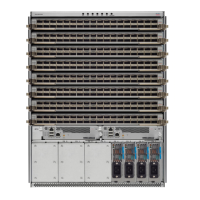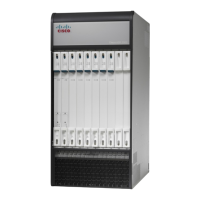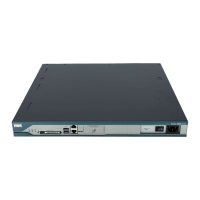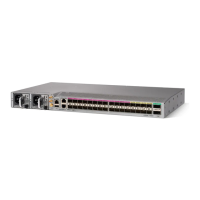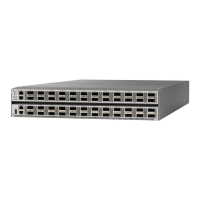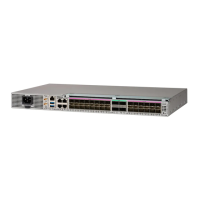Changes if Interoperability Is EnabledSwitch Feature
Zones may be limited to the pWWN and other
proprietary zoning methods (physical port number)
may be eliminated.
On a Brocade switch, use the cfgsave
command to save fabric-wide zoning
configuration. This command does not have
any effect on Cisco SAN switches if they
are part of the same fabric. You must
explicitly save the configuration on each
Cisco SAN switch.
Note
Zoning attributes
Some vendors do not pass the full zone configuration
to other switches, only the active zone set gets passed.
Verify that the active zone set or zone configuration
has correctly propagated to the other switches in the
fabric.
Zone propagation
Interop mode only affects the specified VSAN.VSAN
TE ports and SAN port channels cannot be used to
connect Cisco switches to non-Cisco SAN switches.
Only E ports can be used to connect to non-Cisco
SAN switches. TE ports and SAN port channels can
still be used to connect a Cisco switch to other Cisco
SAN switches even when in interop mode.
TE ports and SAN port channels
The routing of frames within the fabric is not changed
by the introduction of interop mode. The switch
continues to use src-id, dst-id, and ox-id to load
balance across multiple ISL links.
FSPF
This is a switch-wide impacting event. Brocade and
McData require the entire switch to be placed in
offline mode and/or rebooted when changing domain
IDs.
Domain reconfiguration disruptive
This event is limited to the affected VSAN. Cisco
SAN switches have the capability to restart only the
domain manager process for the affected VSAN and
not the entire switch.
Domain reconfiguration nondisruptive
Verify that all vendors have the correct values in their
respective name server database.
Name server
Cisco Nexus 5500 Series NX-OS SAN Switching Configuration Guide, Release 7.x
OL-30895-01 223
Advanced Fibre Channel Features
Switch Interoperability

